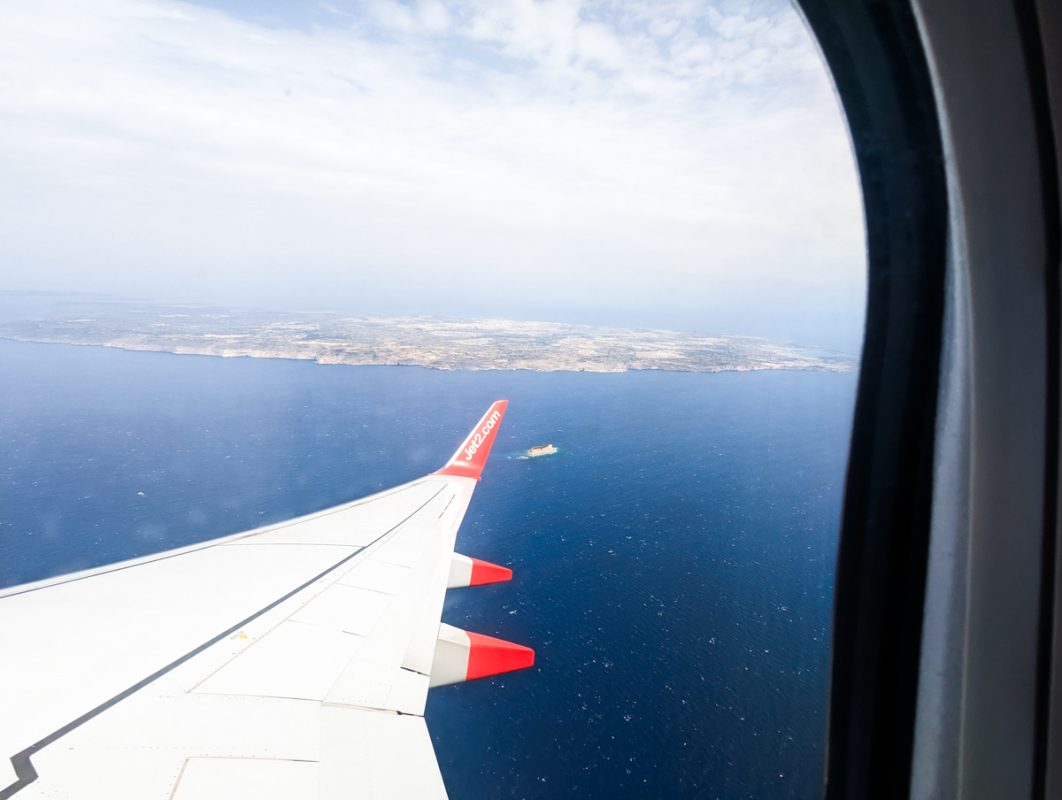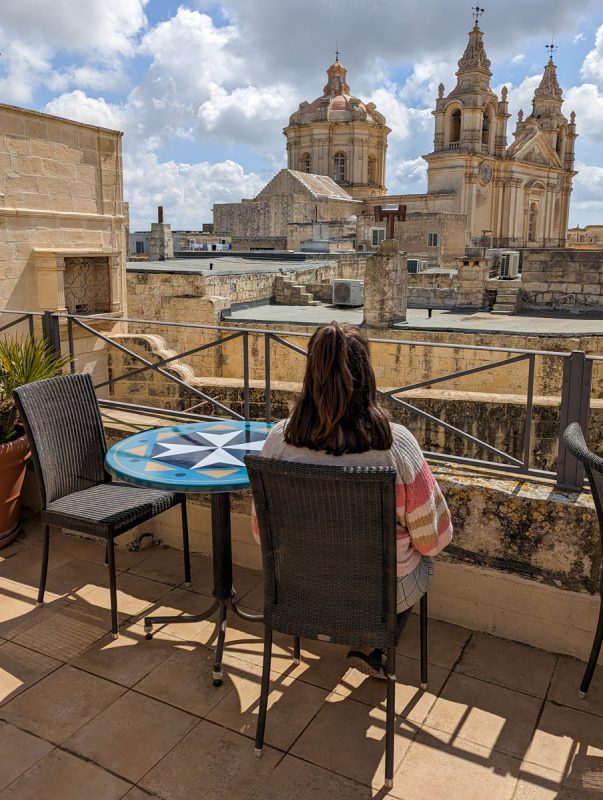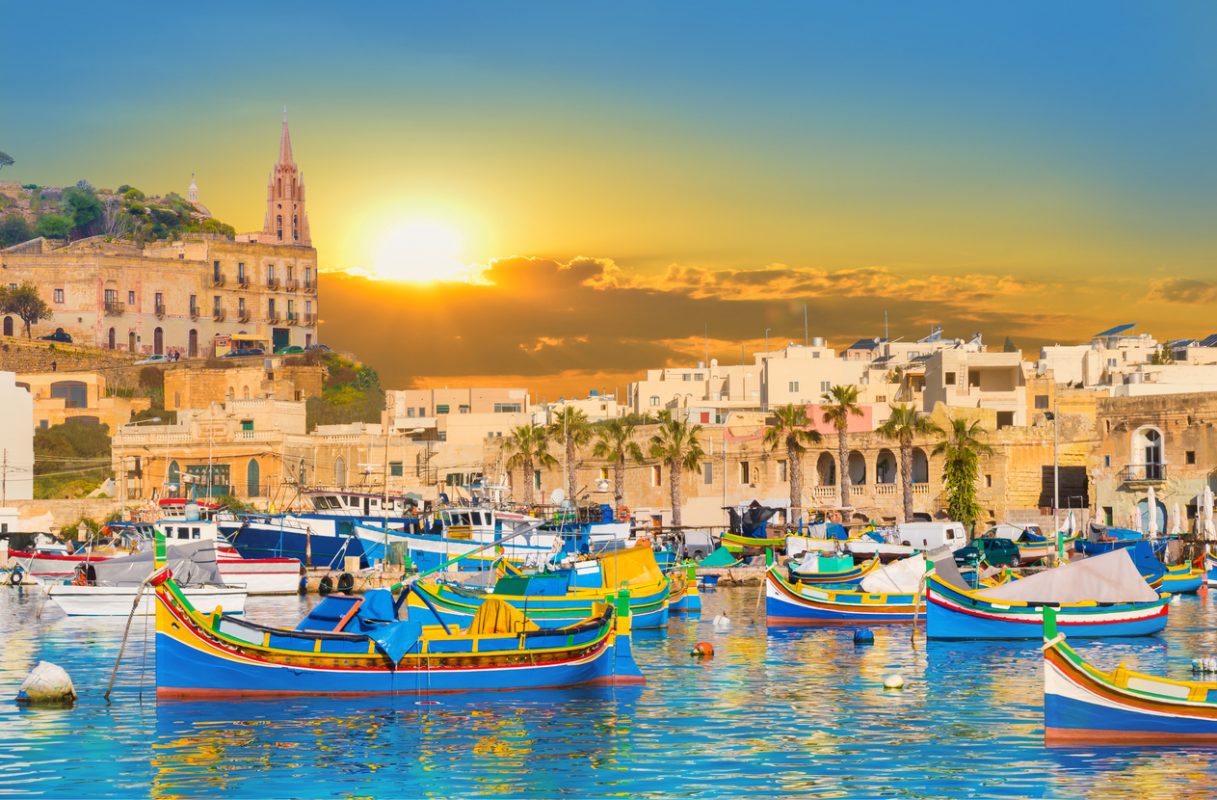Sitting in the heart of the Med, the islands of Malta are most famous for their winter sunshine.
With its historic honey-coloured stone buildings that glow under sunlight and a climate that leans heavily towards the warmer end of the spectrum, Malta’s a sanctuary for those fleeing the chill of winter months in Northern Europe.
You might be planning a cooler-season holiday escape to this sun-drenched archipelago and wonder: does it ever snow in Malta?
I visited Malta twice in winter 2023 and wondered the exact same question – so I thought I’d do a bit of research and write this post!
This article will delve into this question, and explore the seldom discussed facet of Malta’s climate – the possibility and impact of snowfall!
Does it snow in Malta?

Not really.
Snow in Malta is very, very rare.
Thanks to their southern location, the islands of Malta, Gozo, and Comino experience scorching hot summers and mild winters.
While other European countries might be shovelling snow, Malta’s much more likely to experience rain during its winter months.
That said, snow has occurred in Malta, but the instances are so rare that they become significant events!
Valletta, Malta’s capital city, encountered a thin layer of snow in February 1895- but this quickly melted as the day progressed!
Other instances of sleet or light snow have been recorded, but they’re incredibly rare – and the snow nearly never settles.
The winters are relatively warm, with temperatures rarely falling below 10°C (50°F) – so if you do encounter snow in Malta, it’ll feel like a once-in-a-lifetime kind of event!
Why doesn’t it snow in Malta?

The climate of Malta is primarily shaped by its geographic position; it’s in the heart of the Mediterranean Sea, south of Sicily and east of Tunisia.
A typical Mediterranean climate, characterized by hot, dry summers and mild, wet winters, prevails over the islands.
The Mediterranean Sea plays a crucial role in shaping the islands’ weather patterns.
As water heats up and cools down more slowly than land, the sea has a moderating influence on Malta’s temperatures, preventing them from reaching extremes.
This results in long, sun-soaked summers where the islands bask in warmth, with temperatures often climbing above 30°C (86°F), while winters are relatively mild, with averages ranging between 10°C and 15°C (50°F and 59°F).
Rainfall in Malta is at its peak during the winter months, but these are typically brief, heavy showers rather than continuous drizzle.
It’s the temperate nature of Malta’s climate that makes snow a very rare occurrence.
The Mediterranean Sea’s influence keeps winter temperatures from dipping too low, creating an environment that’s not conducive to snow!
Historical snowfall in Malta
While snow is shockingly rare on the Maltese islands, there are some very sparse and infrequent instances.
The history of snowfall in Malta is far from prolific, with official records indicating just seven instances since the mid-19th century.
Light snow, with no accumulation, was reported a few times in the 19th century: in January 1858, March 1877 and February 1895.
Temperatures did dip to a chilling 1.2°C in 1895!
Ten years later, in January 1905, snow flurries swept across Malta, courtesy of a biting Siberian cold wind.
In March 1949, snow was recorded in the interior of the island.
The next memorable event occurred on 31 January 1962 when small snowflakes covered various locations.
On this day, Malta truly experienced an exceedingly rare winter spectacle as 2-3 centimeters of snow blanketed most of the island, including the beaches, while the temperature dropped below 0°C!
The most recent instance occurred on 31 December 2014 when small snowflakes were spotted in different locations. However, this event was not officially recorded.
Malta also experienced an extraordinary hailstorm on 27 December 2008.
The northern side of Valletta was hit in the morning, and lower St John Street area on the Marsamxett side was left with up to two feet of hailstones.
The sheer volume of hailstones left residents astonished!
Does it snow in the countries around Malta?

So, is Malta a European anomaly when it comes to snow, or do other Mediterranean countries experience little snowfall too?
Malta’s further south than mainland Italy and Greece, so it’s no surprise that its climate differs significantly.
Outside the mountainous areas, snow in these nations is rare – it’s nothing like Iceland and Norway in northern Europe.
That being said, both Italy and Greece have ski regions where snow is frequent.
Italy
Mainland Italy, Malta’s closest country, experiences a more varied climate.
It has winter snowfall in the northern and central regions, which host renowned ski resorts in the Alps and Apennines.
Even Rome, Italy’s capital in the centre of the country, experiences occasional snow.
And southern region of Sicily, the Italian island closest to Malta, experiences snow mainly in its interior and higher grounds.
But Sicily is a much bigger island, with more land away from the sea, and it is home to Mount Etna, which is 3,300 meters above sea level.
Greece
Greece sees considerable variations in its climate.
The northern regions and the mountainous interiors receive snowfall during winter, while the islands and southern areas share a climate similar to Malta’s, with milder winters and rare snow.
Tunisia
Tunisia sits close to Malta, but it’s in North Africa.
It has a similar climate; coastal cities in Tunisia have mild, somewhat rainy winters.
Snow can occur in the Atlas Mountains.
As a nation, Malta has one of the lowest incidents of snowfall in the region, thanks to its position in the Mediterranean and lack of high altitudes.
Visiting Malta in winter

So, it very rarely snows in Malta, but that’s not to say it’s not worth visiting on a winter trip!
One of Europe’s warmest winter destinations, here you can expect daytime temperatures around 15°C, ideal for leisurely strolls through historical sites or along the picturesque coastlines.
Malta’s rich history remains a focal point in winter.
Discover the ancient temples of Mnajdra and Ħaġar Qim, walk the fortified walls of Valletta or delve into the old-world charm of Mdina. They’re much quieter in the winter!
Christmas is big in Malta, and there’s a carnival in February.
If you want to connect with nature, Malta boasts green landscapes punctuated by blooming wildflowers – ideal hiking or cycling weather!
Check out my full guide to winter in Malta by clicking here.
Snow in Malta – an oxymoron?
Malta’s not the place to visit if you’re looking for a postcard-perfect winter wonderland, but there are plenty of other reasons that make it well worth visiting in the cooler season (from November through to March).
I loved my winter trips to Malta and highly recommend visiting – and what’s more, you probably won’t need to wear your winter woollies!

